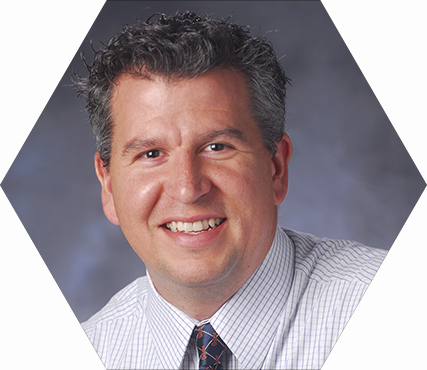Education
- Ph.D., Texas A&M University , 2004
- M.S., University of Florida , 2000
- B.S., University of Florida , 1996
Background
Dr. Gleason began at Tech in Fall 2005 as an Assistant Professor. Prior, he Prior was a Postdoctoral Fellow at Texas A&M University.
Research
- Bioengineering and Mechanics of Materials; Cardiovascular mechanics, soft tissue growth and remodeling, and tissue engineering.
Dr. Gleason's current research interest is in soft tissue biomechanics and growth and remodeling, with particular emphasis on native vascular tissues and tissue engineered constructs. Two key aims of his research are to develop mathematical theories for soft tissue growth and remodeling that allow for the incorporation of observations made at multiple length scales, and to develop novel experimental models to test the underlying assumptions of theoretical simulations that allow for parallel observations at different length scales.
It is unquestioned that cells can sense and respond to changes in loading. Increased load on focal adhesion sites in vascular smooth muscle, for example, can alter cell-signaling pathways, ultimately leading to altered gene expression. Altered gene expression can manifest itself in many different ways, including an altered production of vasoactive molecules, extracellular matrix and matrix-degrading proteins, cell cycle regulating signals, and cytoskeletal proteins, among many others. The net effect of these, and other, mechanotransduction pathways include increases in cell and matrix turnover, local growth (or atrophy), structural and functional remodeling of existing cells, and remodeling of matrix, cell-matrix and matrix-matrix interactions, all aimed, presumably, toward evolving the local mechanical environment from an undesirable' condition to a desirable' condition. Despite the explosion of information on tissue growth and remodeling, from molecular, intracellular, cellular, cell-matrix, organ, and whole organism levels, attempts at integrating these data into a predictive model is still in its infancy; there is a pressing need for such an integrative, multiscale model. Such predictive models will be essential to further our understanding of many physiological and pathophysiological processes and critical to aid in the development and optimization of clinical interventions and tissue engineering strategies.
- ASME Journal of Biomechanical Engineering Reviewer
- American Journal of Physiology: Heart and Circulatory Physiology Reviewer
- Biomechanics and Modeling in Mechanobiology Reviewer
- Journal of Physiology Reviewer
- Texas A&M University Fred J. Benson Graduate Fellowship in Engineering, 2000
Representative Publications
- R. L. Gleason and J. D. Humphrey. 2005. Effects of a Sustained Extension on Arterial Growth and Remodeling: A Theoretical Study. Journal of Biomechanics 38(6), 1255-1261.
- R. L. Gleason, et al. 2004. A Multiaxial computer-controlled Organ Culture and Biomechanical Device for Mouse Carotid Arteries. ASME Journal of Biomechanical Engineering 126(6), 787-795.
- R. L. Gleason and J.D. Humphrey. 2004. A Mixture Model of Arterial Growth and Remodeling in Hypertension: Altered Muscle Tone and Tissue Turnover. Journal of Vascular Research 41(4), 352-363.
- R. L. Gleason, L. A. Taber, and J. D. Humphrey. 2004. A 2-D Model of Flow-Induced Alterations in the Geometry, Structure, and Properties of Carotid Arteries. ASME Journal of Biomechanical Engineering 126(3), 371-381.
- R. L. Gleason, J-J Hu, and J. D. Humphrey. 2004. Building a Functional Artery: Issues from the Perspective of Mechanics. Frontiers in Bioscience 9(1), 2045-2055.

